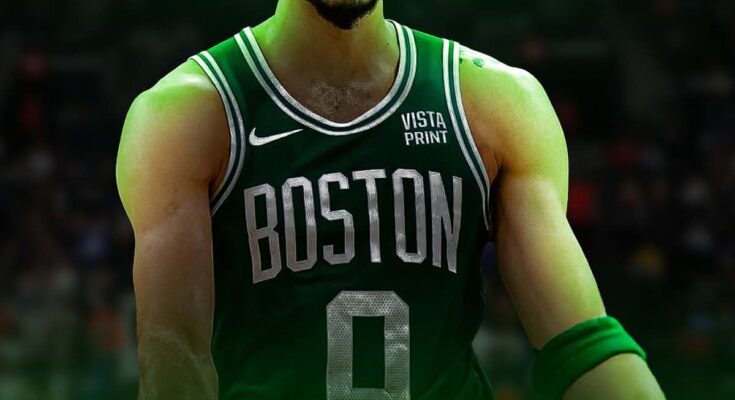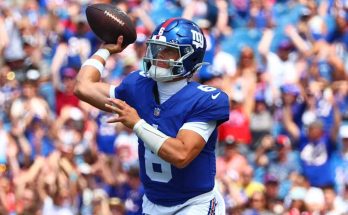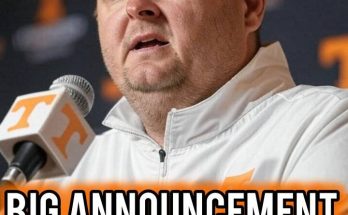Every once in a while, an injury shakes the sports world into a collective holding pattern. The Boston Celtics and their fans have been living in that limbo since May 12, 2025, when Jayson Tatum suffered a catastrophic non‑contact rupture of his right Achilles tendon in Game 4 of the Eastern Conference semifinals against the New York Knicks. At the time, the gravity of the injury seemed to move destiny: not only was the 2024 champion team’s core shaken, but Tatum—averaging approximately 26.8 points, 8.7 rebounds, and over six assists per game and firmly entrenched as a top‑tier All‑NBA talent—appeared headed for a full-season absence in 2025–26 ([The Washington Post][1]). The assumption was that his season was done before it even began.
Yet over the past few months, a shift in tone has begun. While Celtics president of basketball operations Brad Stevens has consistently declined to put a projected return timeline on Tatum, stating multiple times that “we don’t and we won’t” project one, or that “we’re not even talking about a timeline for return”—emphasizing that recovery will proceed in “baby steps” and only at the point when he is “fully ready” physically and mentally ([CBSSports.com][2])—there has been no explicit ruling out of a late‑season comeback. That subtle openness has fueled speculation and optimism among Celtics circles.
Reports this summer have noted meaningful progress in Tatum’s rehabilitation: running water therapy, walking in a pool with his trainer, Nick Sang, on a near‑daily basis, and even in recent Instagram footage, the visible shedding of his medical boot—marking a milestone in his recovery stage ([CelticsBlog][3]). The image of that boot coming off the foot of a superstar recovering from a torn Achilles resonated strongly. Given how rare it is to see that before the season begins, Celtics fans have seized on these hints as potential signs that perhaps the worst‑case scenario—a season entirely lost—isn’t locked in.
Steve Bulpett, writing for Heavy, has commented that “the possibility of Jayson Tatum returning late in the 2025‑26 regular season is still alive,” and recent sightings—presumably of Tatum in the Celtics’ facility, walking around, interacting—have apparently energized Boston. Though no direct quotes from Bulpett were included in the report I found, the context aligns with what other outlets like CelticsBlog, NESN, and Celtics Blog Daily Links have likewise implied: that while Boston isn’t planning for Tatum’s return in any official sense, the door remains open and reconstruction of the roster has been measured with an eye toward that eventuality ([CelticsBlog][4], [CelticsBlog][5]).
Brad Stevens’ insistence on caution is understandable, especially given the stakes of an Achilles comeback. Reinjury is always a concern, and multiple past stars like Kevin Durant and Kobe Bryant never again reached their prior peak after similar injuries—even though others like Jamal Murray and Stephen Curry eventually returned to elite levels. Nonetheless, the examples from Denver’s rebuild while Murray rehabilitated and Golden State’s evolution around Curry during his recovery offer models the Celtics front office may be watching closely ([The Washington Post][6]).
Team-building moves this offseason have underscored that Boston is gearing toward whichever path manifests: potentially enduring the 2025–26 campaign without Tatum, but also keeping open the possibility of his return in its later stages. They traded away veterans like Jrue Holiday and Kristaps Porziņģis this summer and allowed players like Luke Kornet and likely Al Horford to depart—moves intended to get under the second tax apron and retool financially, while still leaving flexibility for a future window with Tatum, Brown, White, and younger supporting pieces like Anfernee Simons and Georges Niang ([CBSSports.com][2]). Boston’s president has said explicitly that the organization never speaks in terms of rebuilds—they’re always building toward a future goal, even without a star on the floor right now ([Boston.com][7]).
The optics and chatter in Boston—and indeed among league observers—have shifted gradually from seeing Tatum as likely out for the year to viewing a late return as a plausible upside scenario. The “buzz” is rooted in tangible developments: visible rehab progression, daily work at the facility, and the loosening of his boot. None of it guarantees he’ll suit up by March or April or even that he’ll play meaningful minutes in the regular season, but it keeps hope alive.
On the floor, without Tatum, the Celtics will lean heavily on Jaylen Brown, Derrick White, Payton Pritchard, Simons, Niang, and whomever else emerges. Brown had knee surgery this summer, but Stevens says he’s trending toward being ready by training camp, and many expect his leadership to carry the load in Tatum’s absence ([NESN.com][8], [NESN.com][9]). But the roster that will open camp without Tatum is clearly built with an eye toward re‑adding him at some point.
Contextually, Tatum’s durability over his first seven full seasons has been remarkable—he never played less than 90% of the regular season games in those years and never missed a single playoff game, and logged over 113 career postseason games by 2025 ([FOX Sports][10], [Reddit][11]). He’s known for consistency and availability when healthy. However, an Achilles tear at age 27—just after signing a five‑year, \$314 million extension in July 2024—puts that track record to its most serious test yet ([The Washington Post][6]).
In forums like Reddit, Celtics fans have noted how important that durability is to the franchise: one post pointed out that Boston is often actually better in games without Tatum simply because the team is deep and well‑balanced, though that obviously underplays his superstar impact when available ([Reddit][12]). Earlier in the 2024–25 season, Tatum’s emergence as more of a floor general—averaging near triple‑double numbers and dramatically improving his playmaking—marked another leap in his all‑around game coming into this next phase ([Reddit][13], [Reddit][14]).
So here’s where things stand as of early August 2025: the Celtics have not committed to a return date for Jayson Tatum. Brad Stevens remains steadfast that his recovery must dictate timing, not any projected schedule. But signs are emerging: Tatum is walking, posting rehab videos, no longer needed the boot, working daily with his trainer in Boston. While the baseline expectation for many analysts is that he’ll miss most if not all of the 2025–26 campaign, the narrative has shifted to include the possibility he could return late in that season. That framing—“the door isn’t closed”—has ignited conversation and hope across Boston’s media ecosystem.
For Celtics fans, that combination of urgency and patience will define the season ahead. On one hand, they must accept the reality of the roster as it starts without its star; on the other, they must remain alert to the emergence of a late‑season Tatum return, with all its potential implications for playoff seeding, momentum, and chemistry. If he does return, even in a limited capacity, it would alter the trajectory of the season significantly—and potentially force other teams to recalibrate their expectations.
The roster strategy, the trades, the cap moves, and the offseason messaging have been calibrated to ensure Boston is not betting everything on Tatum’s timeline—but still able to pivot quickly should he rejoin. It’s a delicate balance: maintain competitiveness in 2025–26, contain costs during his absence, but design a pathway so that when the Achilles healing nears the final phases, the franchise can move swiftly and decisively.
Steve Bulpett’s line that Boston is buzzing about “the possibility of Tatum returning late” isn’t mere wishful thinking—it reflects a shift in interpretation of rehab visuals, comments from internal staff, and overall team narrative. It’s also grounded in history: the Boston Celtics have rarely accepted fate without resistance. If Tatum does get back on the court—even for the final dozen or twenty games—that chance to “save” or “shift” the season could create momentum toward a late playoff surge.
Taken together, the most responsible way to approach the Celtics’ upcoming season is with dual perspectives: they begin without Tatum, but with planning assumptions that prioritize his long‑term health. Yet if rehab continues progressing, and if he continues to show readiness, then the Celtics will be poised to re‑insert him carefully in the late regular season, hoping to get a few games of chemistry and load‑management rhythm before the playoffs. That potential return may not carry the expectation of all‑star level minutes or dominance—this isn’t about rushing back early—but it could offer Boston a spark and structural boost.
Given how high the expectations were entering 2024–25 and how durable Tatum has been, the loss of his postseason presence in Game 4 was a culmination of critical dependence. His absence cost them not only a star, but also the psychological identity of a championship team. The cautious optimism now emerging—driven by progress reports, patience from leadership, and recent sightings of him walking in the building without a boot—represents a new chapter: one that sees the cup half‑full rather than definitively empty.
Boston isn’t expecting Tatum to start the season. They’re preparing for a campaign built on Jaylen Brown, Derrick White, Simons, Niang, and promising bench pieces. But they’re also carrying hope in the background that if everything breaks right—rehab progresses perfectly, he avoids setbacks, and timing aligns—he could suit up late in March or April. That would not just be a comeback—it could be a season’s worth of story rewritten on the fly.
The buzz in Boston and Steve Bulpett’s reporting reflect that layered possibility: the team is balanced enough to compete without him, yet smart enough to hold open the door—whispering that the 2025–26 regular season may still include Jayson Tatum. At this point in time, it’s not the likeliest scenario, but it’s not ruled out either—and sometimes, in sports, that sliver of hope is the spark a franchise rides back into relevance.



